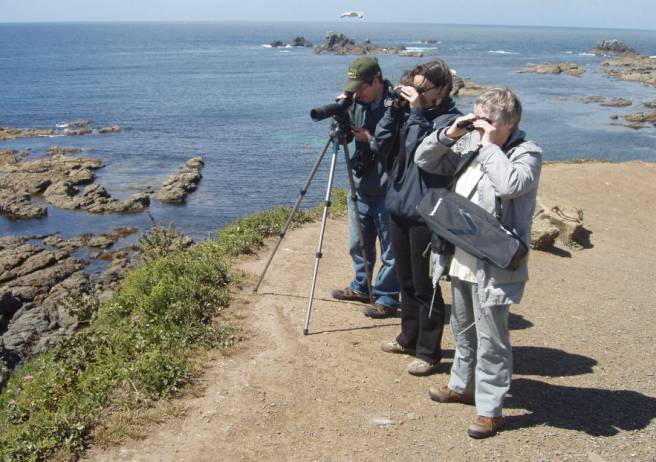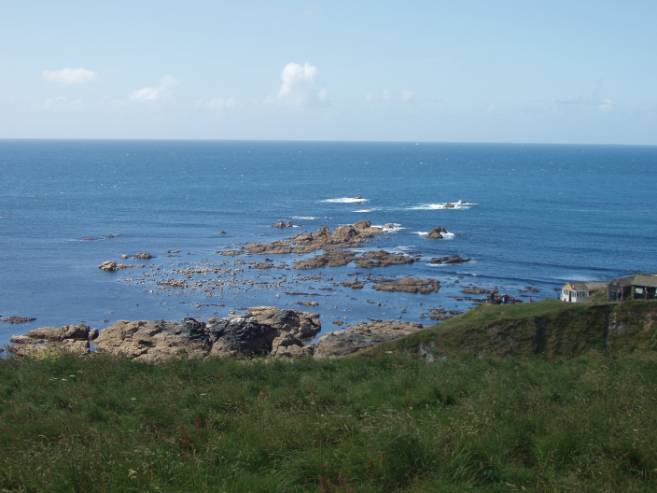
Our
plan, for the day, was to go to Lizard. Thatís Britainís most southerly
point. Letís go.
It
wasnít far from Boscadjack and soon we were close by the headland.

How
fantastic!
I
had gone in the hope of seeing some of Englandís rarest crows Ė the choughs.
Some folks donít get excited by what might look much like a jackdaw. And on
arrival it was jackdaws that I saw.

Letís
just compare that with a chough (an image from the RSPB site).
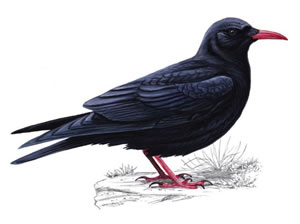
There
are obvious differences.
Something
that was incredibly obvious at the lizard was what I now know is the Hottentot
Fig. This is, in truth, an invasive plant from South Africa. It has colonised
the Lizard cliffs.
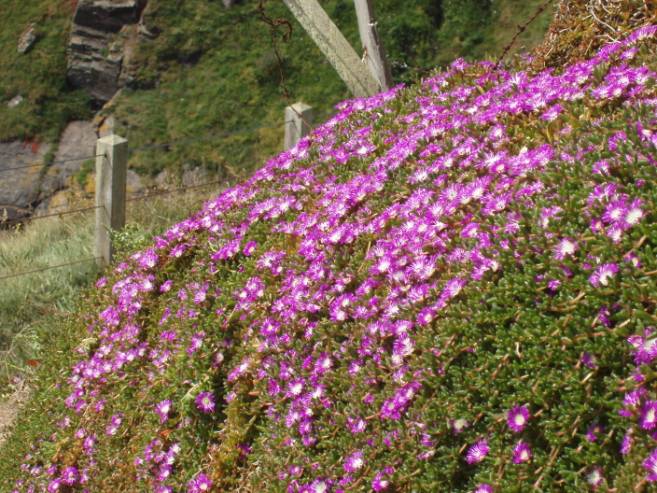
And
very pretty it looks too although it is described as Ďperniciousí.
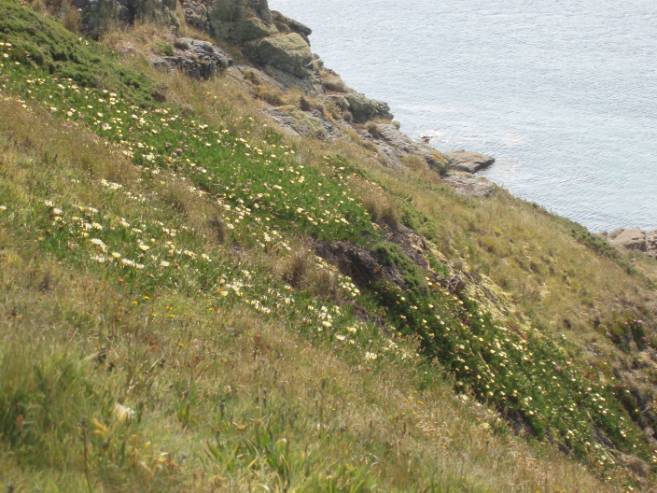
The
yellow flowering variety is less obvious than the pink.
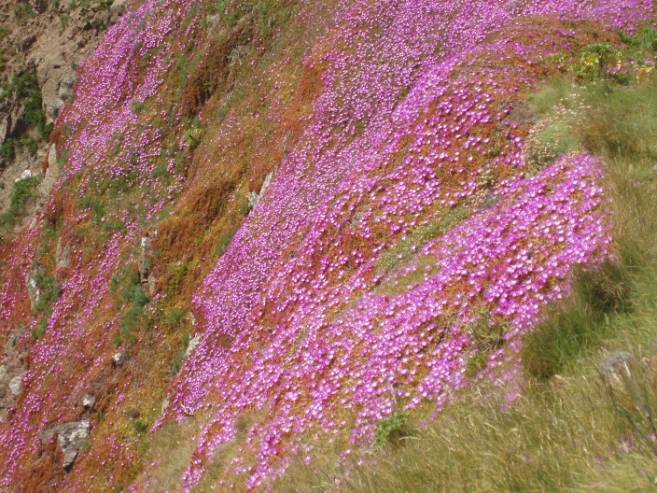

The
local bees seem happy to have the illegal immigrant plant.

The
hottentot fig has gotten totally everywhere.
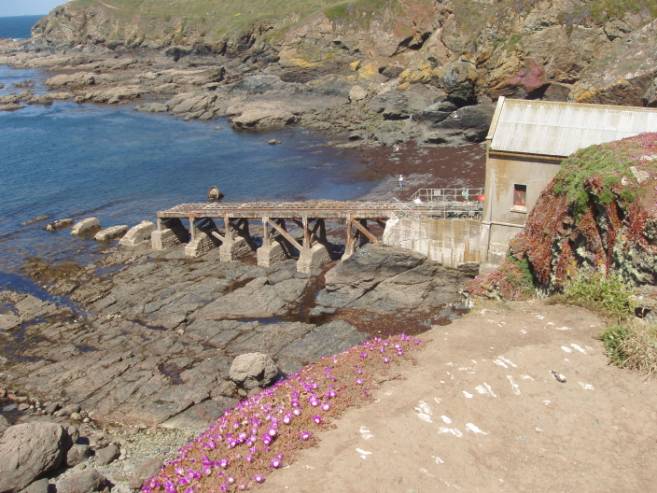
It
reaches almost to the edge of the sea.
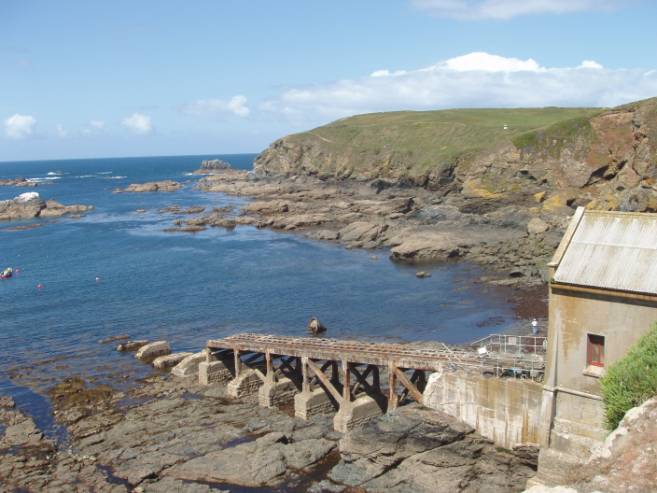
The
boathouse and slipway are no longer in use. Up on top of the cliff thereís a
white dot. Thatís where protectors of the chough spend time, protecting a nest
from any nasty egg stealers.

I
had already spotted choughs fly in and out of their inlet, to feed their young.
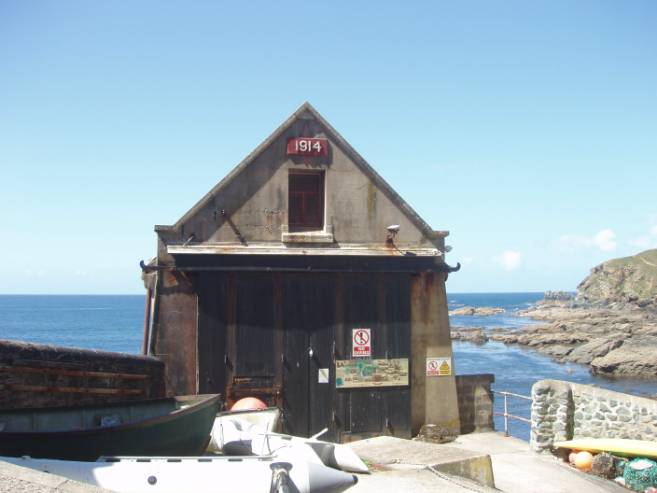
The
boathouse Ė almost 100 years old.
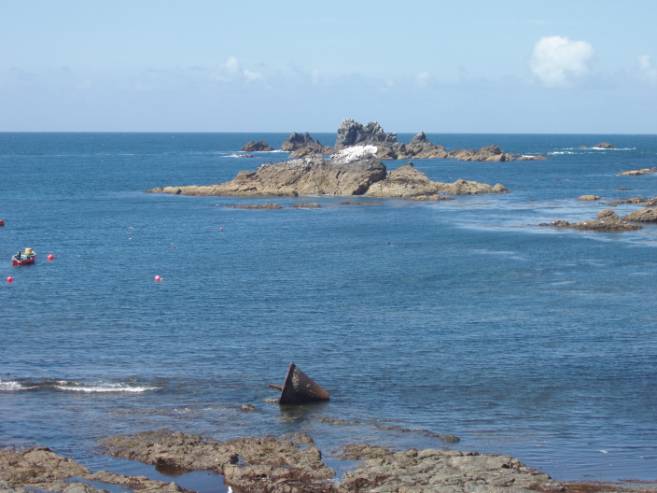
Thereís
rocks and debris out to sea. Last time I was at Lizard there were seals to be
seen. We did, eventually, spot some this time.

Yellow
fig tumbling down the cliff Ė or maybe working its way up?

Yes,
pink fig as well.
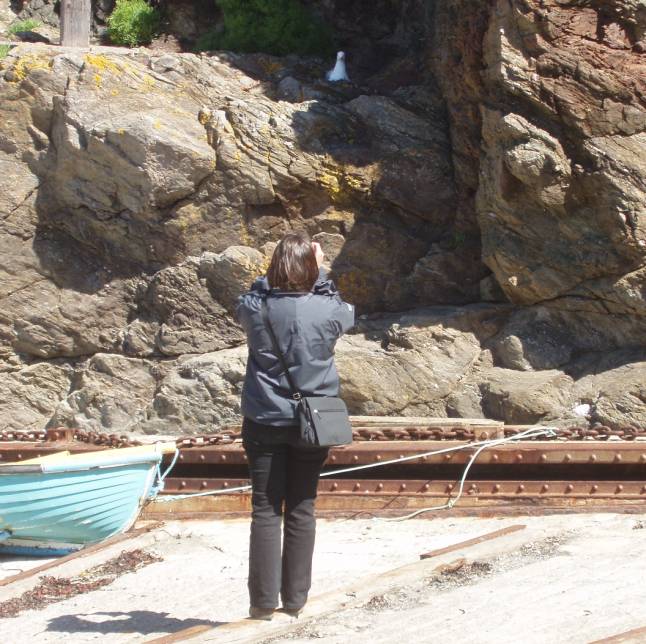
One
of our group (who, incidentally, I had got separated from for some time) finds a
gull to snap.
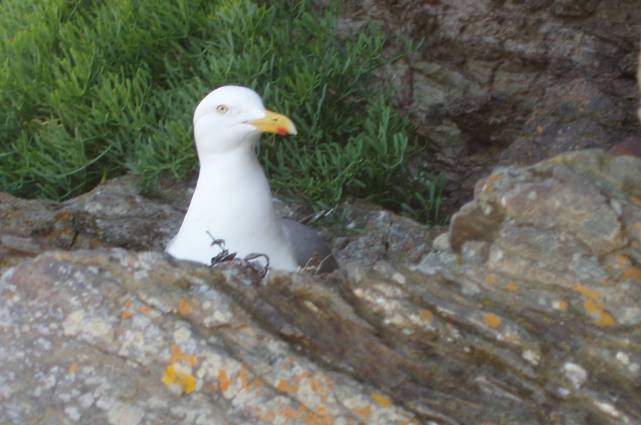
What
a fine bird.
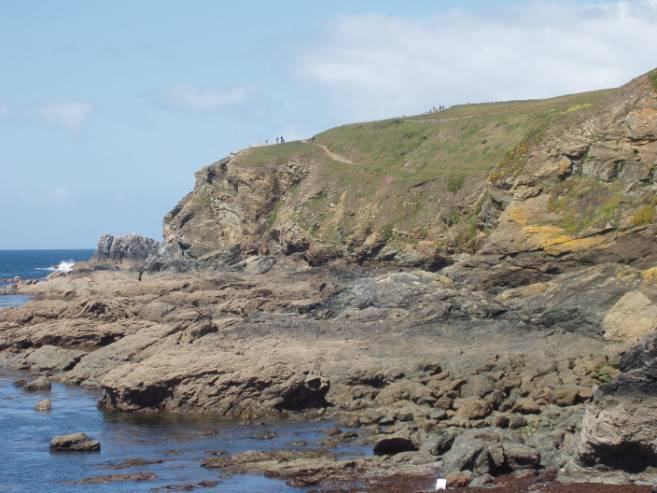
Iíd
guess those people on the cliff are chough spotters, hoping to see the two
adults fly in with food for the young in their nest.
Letís
stop with the picture used as the title page for the Cornwall 2011 website Ė
the bird watchers.
